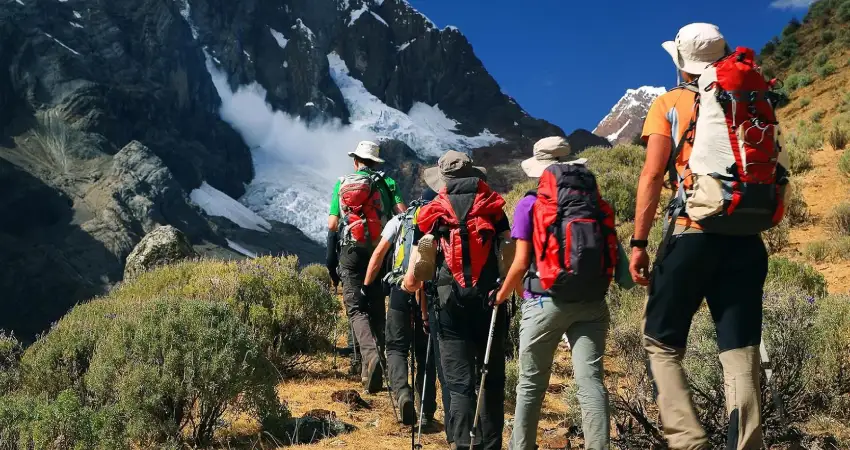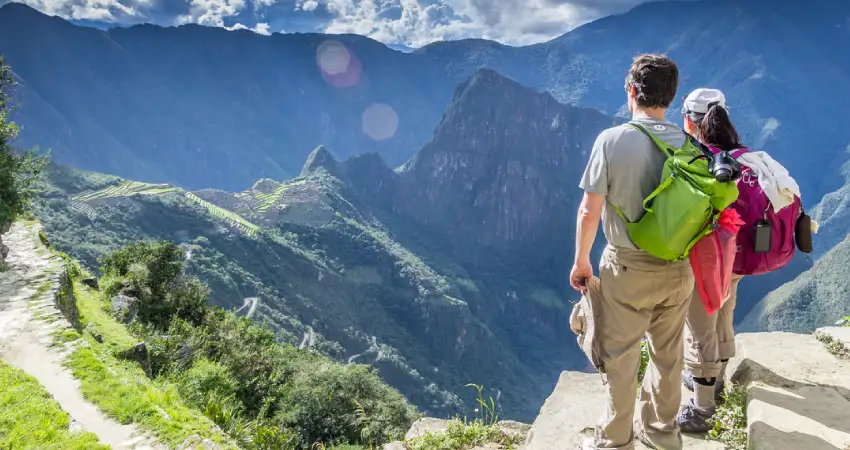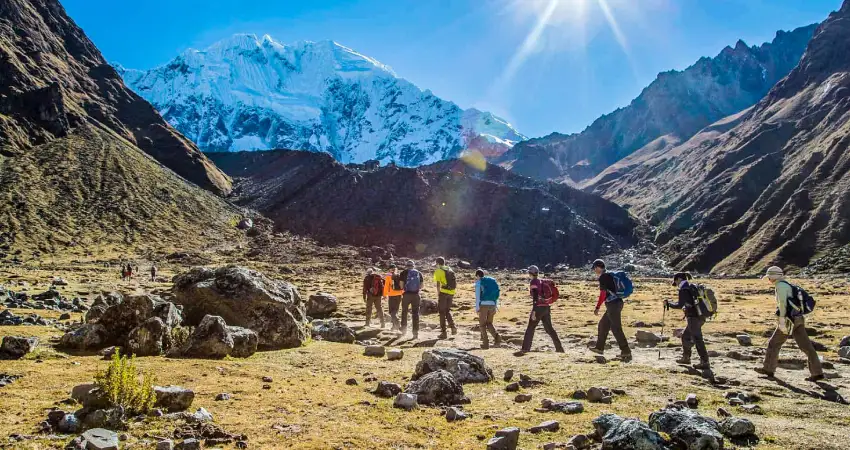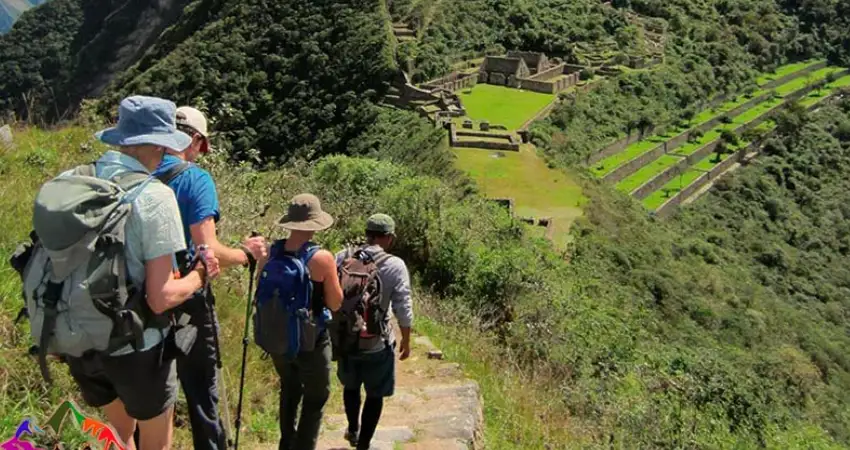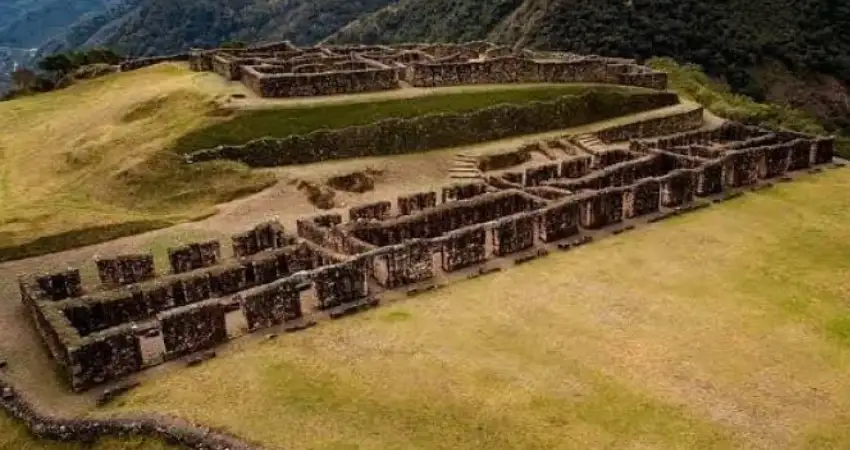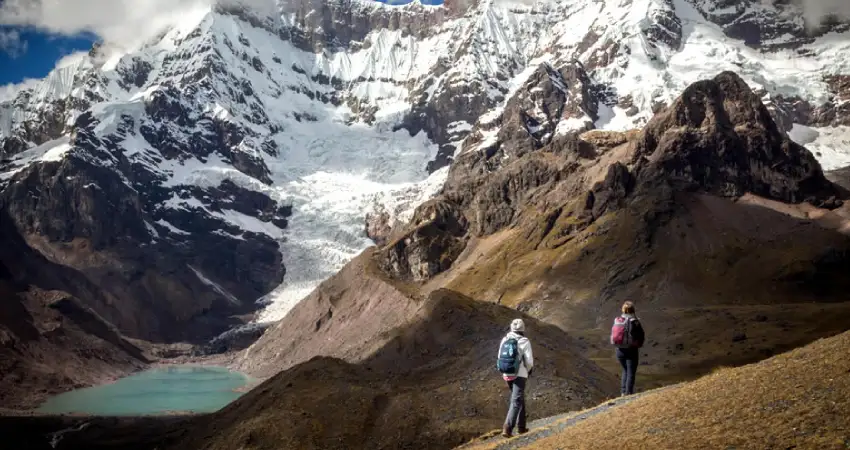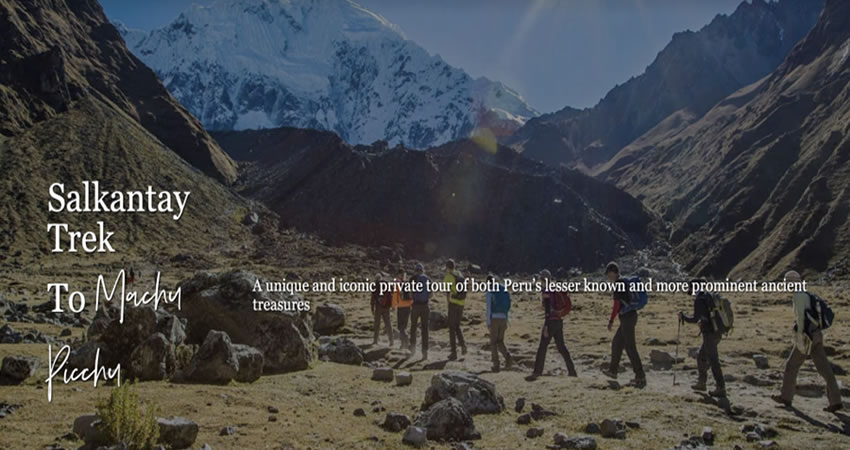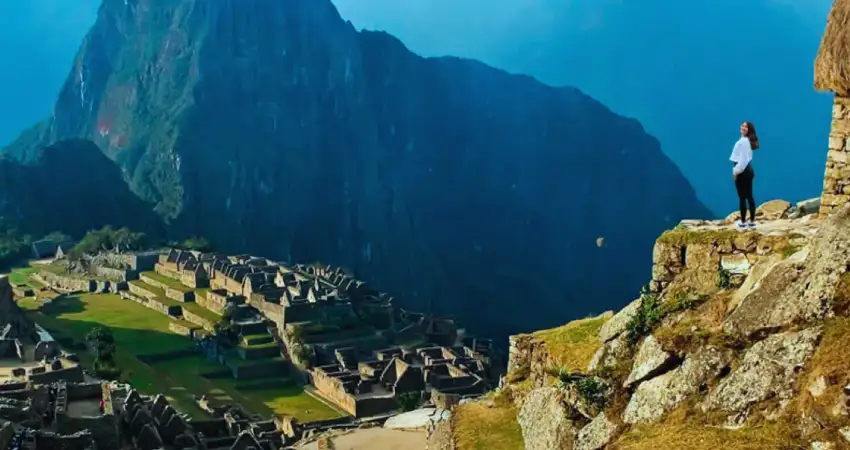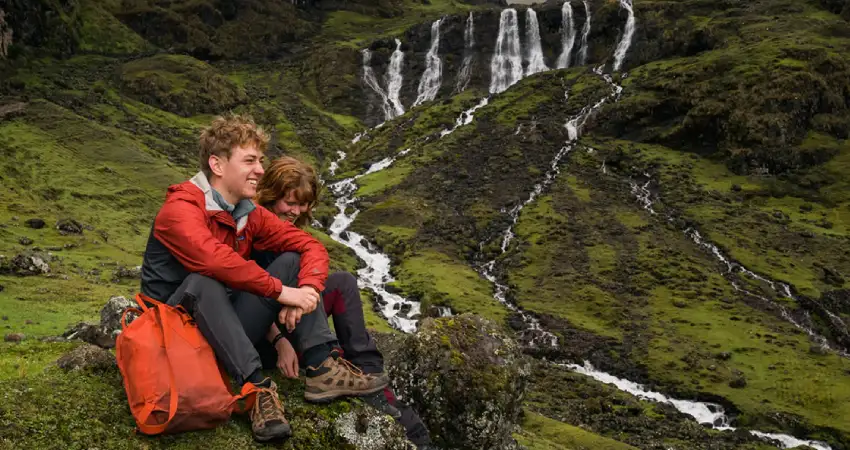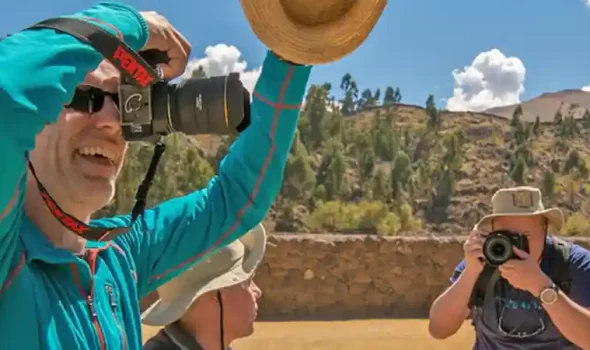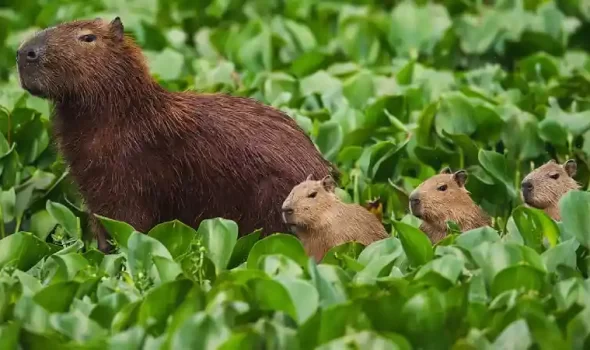1.- INTRODUCTION
Machu Picchu is one of the wonders of the world that has several ways to be visited, from traditional options with train trips to more challenging options such as the Inca Trail alternative Treks. Naturally the most popular will always be the classic Inca Trail that takes you for four days through the mountains to reach the Inca city located on top of a mountain passing through the incredible Sun Gate. During the last few years the Peruvian government has established and increased stricter regulations within the management of the Inca Trail causing it to be more regulated.
Among the main regulations is that this activity can only be done with a travel agency associated with the entity SERNANP and the Ministry of Culture, also the month of February is designated to perform proper maintenance of the entire route so it is closed, allowing the rest of the year can be enjoyed by all travelers.
Being so popular the 500 daily spaces that exist are sold out very easily and even more when it is known that of the total only 200 are intended for use by travelers and the other 300 are for support staff (porters and guides), this is the reason why the spaces are so appreciated and sought after by travelers, of course these also have restrictions to prevent any type of fraud, here it is considered that when a ticket is purchased there is no aspect of return, rescheduling or change of user, once purchased the ticket is locked to have a single use and if the traveler does not go this ticket is not available again.
2.- REASONS TO CONSIDER ALTERNATIVES
Due to all these restrictions is that the implementation of new Inca Trail alternative Treks was considered to facilitate the experience for adventurers seeking to enjoy a new way to reach Machu Picchu. The intention when choosing an Inca Trail alternative is to enjoy the connection with nature, tradition and culture at the same time while seeking to reach the dream destination for which you decided to choose Peru for your vacation.
3.- OPTIONS FOR ALTERNATIVE INCA TRAIL HIKES
3.1.- Salkantay Trek
This is considered as the most popular Inca Trail alternative at the moment and the one that is considered right away when there are no more spaces available in the traditional Inca Trail option, the entire trail that conforms it is part of the network of roads built by the Inca culture, currently known as Qhapaq Ñam. Starting from the town of Soraypampa, which is located at the base of a snow-capped mountain, you start an arduous hike that lasts about five days in its traditional version, while you can appreciate how the geography changes and the environment as well, from extensive meadows in the valley of Salkantay, ascending to the highest point also known as Abra Salkantay until finally entering the jungle area and arriving to the city of the Inca. Something that makes this Inca Trail alternative very particular is undoubtedly that travelers who come to experience it feel how it is a radical change of microclimates as you go, going from the cold snowy to the hot and humid environment of the jungle, The most important thing is that this Inca Trail alternative is available for you throughout the year so no matter what date your trip is you can consider it without problem, just take into account that it is best to avoid it during the months of February and March because it is the season in which there is more rain and makes the activity complicated.
| Comparative chart | Salkantay Trek | Classic Inca Trail |
| Duration | 05 days – 04 nights | 04 days – 03 nights |
| Distance | 32 miles | 30 miles |
| Difficulty | Challenging | Hard |
| Permit | No need for | Issued only by authorized travel agencies |
| Highlights | Snow-capped mountains, lagoons, mountains, hot springs | Archaeological centers, mountains, snowy landscapes, Sun Gate |
| Maximum height | 4600 msnm | 4215 msnm |
| Support equipment | Team of muleteers and asemilas (pack donkeys) | Team of porters and cook |
3.2.- Lares Trek
This Inca Trail alternative is also popularly known as the weaver’s route because it is an experience that provides the opportunity to have a much closer interaction and connection with traditional villages in the most remote areas of the Peruvian Andes. An incredible adventure that starts from the sacred valley itself while exploring the incredible Andes, each traditional village or archaeological center that you get to know is unique in its kind and moves all travelers to enjoy every moment of their journey. Compared to other Inca Trail alternative that experience is more experiential so obviously it is not for all travelers, only for those who are more interested in learning about the culture and ancient tradition that is inherited by generations, in the same way is very accessible because it has no seasonal restriction and is enabled throughout the year to visit, of course it is best avoided during the rainy season and mainly between February and March because of the height at which it is the cold is much colder becoming much more difficult for visitors.
| Comparative chart | Lares Trek | Classic Inca Trail |
| Duration | 04 days – 03 nights | 04 days – 03 nights |
| Distance | 21 miles | 30 miles |
| Difficulty | Hard | Hard |
| Permit | No need for | Issued only by authorized travel agencies |
| Highlights | Breathtaking mountain views, Andean culture and hot springs | Archaeological centers, mountains, snowy landscapes, Sun Gate |
| Maximum height | 4450 msnm | 4215 msnm |
| Support equipment | Team of muleteers and asemilas (pack donkeys) | Team of porters and cook |
| “TRAVEL, money is recovered, time is not.” |
3.3.- Choquequirao Trek
The most challenging and intrepid Inca Trail alternative for the most daring is undoubtedly the trek to Choquequirao, because of its structure and shape many people in the world have catalogued it as the sister of Machu Picchu, however its access is much more complicated which makes the effort greater. It has options of many durations ranging from 4 to 8 days and depending on the level of experience of the adventurers that designates which is the best. Its interior contains an incredible collection of unique natural landscapes in addition to containing ecosystems typical of the region, its tropical cloud forests also give it that unique distinctive which allows visiting it is a journey, certainly this experience is not for novices and although it is available throughout the damage if it is recommended to visit only in the dry season between May and October as it is the season in which the weather is much more stable and the road is easier to travel. You should consider this Inca Trail alternative that leads only to the city of Choquequirao in its traditional version of 4 days, if you are looking to combine the experience to also reach the city of Machu Picchu you should necessarily consider its version of 8 days which is the most extensive.
| Comparative chart | Choquequirao Trek | Classic Inca Trail |
| Duration | 08 days – 07 nights | 04 days – 03 nights |
| Distance | 21 miles | 30 miles |
| Difficulty | Challenging | Hard |
| Permit | No need for | Issued only by authorized travel agencies |
| Highlights | Archaeological sites, condor flights, mountains and waterfalls | Archaeological centers, mountains, snowy landscapes, Sun Gate |
| Maximum height | 4680 msnm | 4215 msnm |
| Support equipment | Team of muleteers and asemilas (pack donkeys) | Team of porters and cook |
3.4.- Vilcabamba Trek
This Inca Trail alternative is very particular among all of them since it is also known as the jungle trek due to the fact that its path extends through cloud forests which makes its journey something mysterious. It has a traditional duration of 5 days through the Vilcabamba mountain range allowing travelers who embark on it to finally reach the Inca city of Machu Picchu, along the way travelers can also appreciate some important archaeological sites in addition to living for a short time with the local people who are regularly seen performing their daily activities such as agriculture. This hike has the popularity of allowing you to know the place where the palace of the last Inca emperor that existed is located, which was built in the mid-sixteenth century. The Inca Trail alternative of Vilcabamba is available to travelers throughout the year and is one of the most beautiful that can be done on your next trip.
| Comparative chart | Vilcabamba Trek | Classic Inca Trail |
| Duration | 05 days – 04 nights | 04 days – 03 nights |
| Distance | 31 miles | 30 miles |
| Difficulty | Moderate | Hard |
| Permit | No need for | Issued only by authorized travel agencies |
| Highlights | Archeological centers, unique cloud forest landscapes, local farms | Archaeological centers, mountains, snowy landscapes, Sun Gate |
| Maximum height | 4500 msnm | 4215 msnm |
| Support equipment | Team of muleteers and asemilas (pack donkeys) | Team of porters and cook |
3.5.- Ausangate Trek
The trail that leads to the Ausangate is considered the most challenging and beautiful Inca Trail alternative at the same time. Although it is clearly different from the rest because it does not allow the visit to Machu Picchu if it gives you the opportunity to meet the highest mountain in all of Cusco, second Andean belief Ausangate is the protector of the city and is the origin of all life. Although it does not have as a destination in the world wonder of Machu Picchu is allowed to have other unique views such as its peculiar lagoons formed by the melting of its snowy and also appreciate the popular rainbow mountain, this experiential experience allows travelers to disconnect from the world and to walk one of the oldest traditional trails in the region thus allowing one can also be found and have a different way of seeing things in the world. It is available all year round for travelers and you do not need an entrance ticket to visit it, only previous experience, as it is so extensive that a previous level of hiking knowledge is required.
| Comparative chart | Ausangate Trek | Classic Inca Trail |
| Duration | 06 days – 05 nights | 04 days – 03 nights |
| Distance | 41 miles | 30 miles |
| Difficulty | Challenging | Hard |
| Permit | No need for | Issued only by authorized travel agencies |
| Highlights | Glaciers and lagoons, Andean wildlife, remarkable mountain vistas | Archaeological centers, mountains, snowy landscapes, Sun Gate |
| Maximum height | 5125 msnm | 4215 msnm |
| Support equipment | Team of muleteers and asemilas (pack donkeys) | Team of porters and cook |
4.- ANDEAN COSMOGONY
“When choosing your next Inca Trail alternative you should consider that you will probably get to pass through mountains, according to Andean belief these are the protective entities or gods also known as Apus. It is important that at the beginning you ask permission in a symbolic way, that you do it in the company of your tour guide but always remember to have respect for the cultural environment that has witnessed the passage of time.”
5.- PREPARING FOR YOUR TREK
When choosing the Inca Trail alternative you must take into account that there are light options as well as others that are more challenging for this reason it is very important that your physical condition is adequate. Even if you are not an expert hiker it will be important that you exercise regularly with routines of 20 to 30 minutes so that your body is prepared and at the time of the hike you will not have any inconveniences.
On the other hand it is common that many people when arriving to the Peruvian Andes have altitude sickness, for this there are many ways to alleviate it. Starting with hydration, drinking plenty of water allows the body to oxygenate constantly and thus counteract the altitude sickness, on the other hand the infusions of coca leaf also help the body to acclimatize easily and finally the food, during the first days try to consume light things like a diet of chicken or soup.
6.- FAQS ABOUT FAVORITE INCA TRAIL ALTERNATIVE
- Are Inca Trail alternatives less crowded than the classic Inca Trail?
Some are even more crowded than the Inca Trail as is the case of Salkantay which is the most popular Inca Trail alternative when there are no spaces for the classic route, however there are others that are less crowded because they are made specifically for a type of traveler who does not come frequently as is the case of Lares.
- Do I need a permit for alternative treks like I do for the Inca Trail?
No, most of the Inca Trail alternative does not require an entrance ticket to be able to do it, you only have to complement it with the entrance to visit Machu Picchu and in others as is the case of Ausangate local income to visit the rainbow mountain.
- Which alternative trek is the most challenging?
The most challenging experience of all is undoubtedly the trail to Ausangate and Choquequirao, although none of them takes you to Machu Picchu in unique experiences that are only recommended for the most experienced.
- Can I still see Machu Picchu if I choose an alternative trek?
Not all alternative Inca Trail Hikes allow you to reach Machu Picchu, some only lead to different destinations but can easily be complemented with the traditional Machu Picchu one day visit, you can customize this adventure with our experience advisors.
- What’s the best time of year to do these alternative treks?
For trekking experiences the best season of the year will always be the dry season, it occurs between May and October and is the time of the year when the weather does not change frequently or constantly is much more stable and the presence of rain is almost null.
- Are the alternative treks cheaper than the classic Inca Trail?
Yes, the planning of the classic Inca Trail involves various elements such as food, support equipment, permits and others, which makes its price always higher. In comparison, the alternative Inca Trail Hikes are cheaper by up to 20%.
- Do I need a guide for these alternative treks?
Although it is not mandatory, we do recommend that you always have the company of an experienced tour guide who knows the route because the paths often separate and can take you to a different destination.
- What kind of accommodation can I expect on these treks?
In most cases camping nights are considered in strategic places, do not worry about this, the travel agency you choose will consider all the aspects for this as the complete camping equipment, you will only have to bring your personal sleeping bag.
Now you know all the alternative Inca Trail Hikes among which you could choose your next adventure, do not think so much just choose your travel date and start planning, Auri Peru can provide a complete and permanent advice to absolve any doubts you have, contact us now and let us design an unforgettable adventure for you.
“The trek adventure is calling you, do you want to answer it?”




